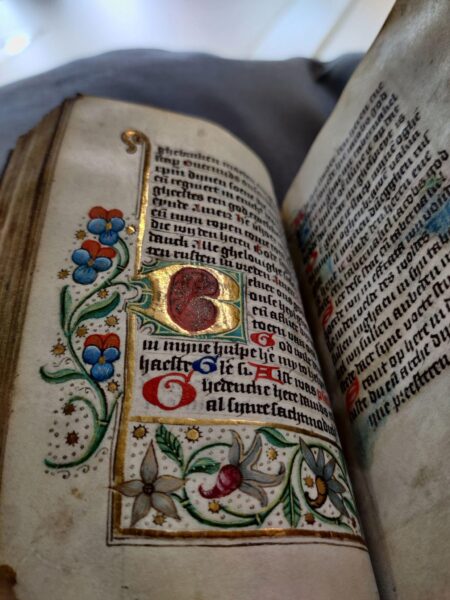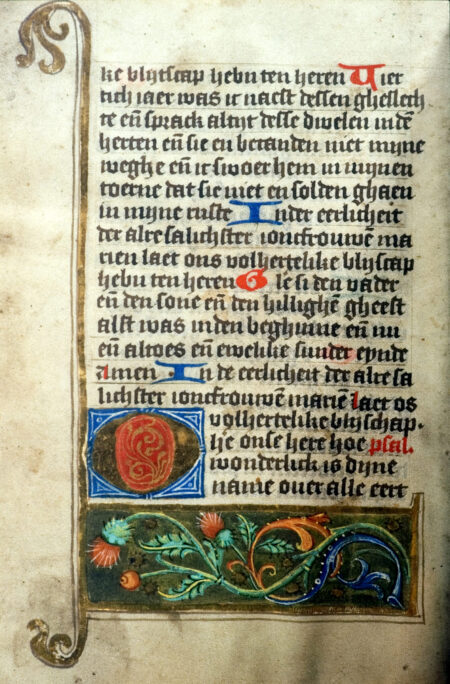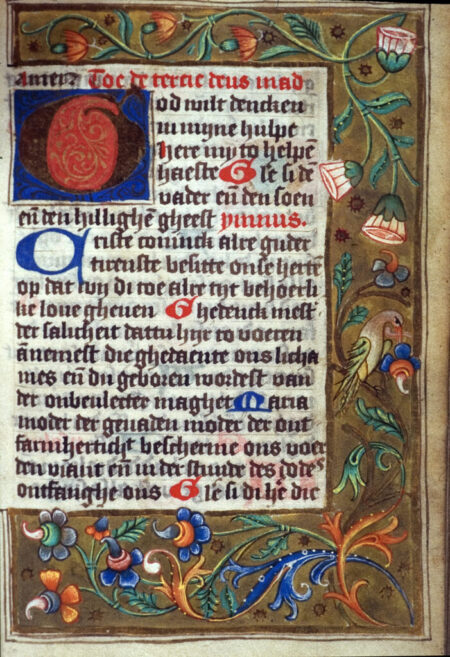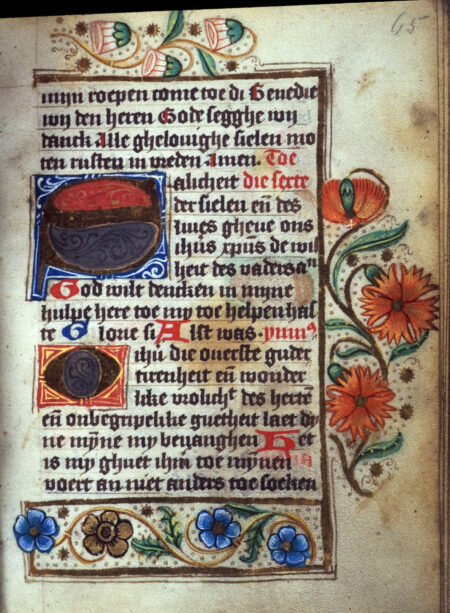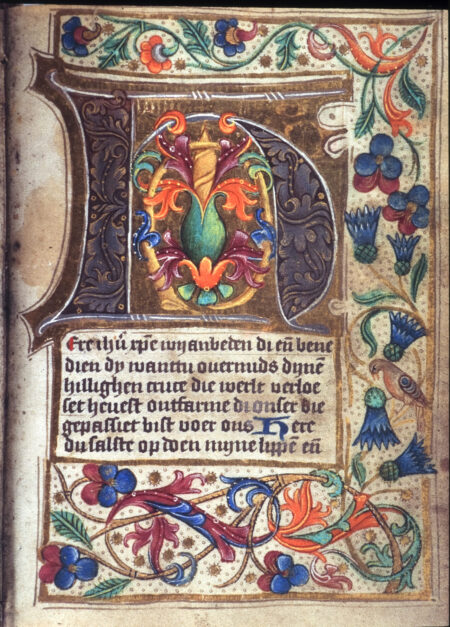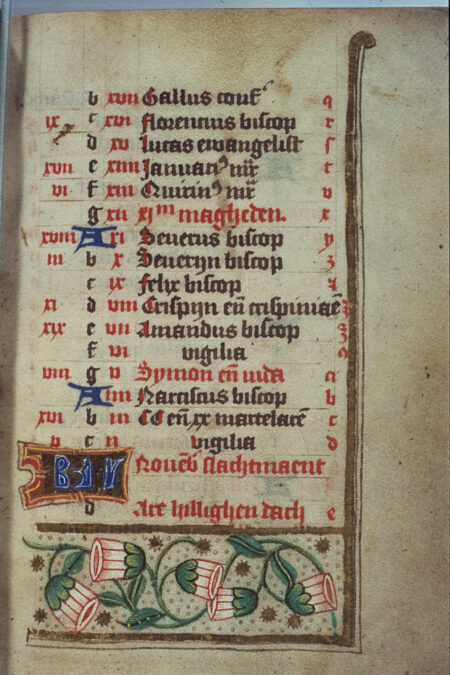This is the location of the Kloosterkerk (Monastery Church) of Thesinge. This building is the last remnant of a monastery that could once be found on this location. The name of the monastery was Germania. The current Kloosterkerk is not the complete church of the former monastery; it only consists of the choir of the original monastery church, which was a lot bigger.
As with many monasteries in Groningen, we know very little about the earliest history of Germania. For example, we do not know when exactly the monastery was established, but the oldest mention dates back to 1283 and can be found in the so-called Continuation of the Chronicle of Wittewierum. We also know that the Thesinger monastery took over the church of Bedum and its farmlands in 1285, and that it was merged with the monastery in Ten Boer between 1465 and 1485. Both monasteries were very poor at the time. Thanks to the merger, at least the monastery in Thesinge managed to survive.
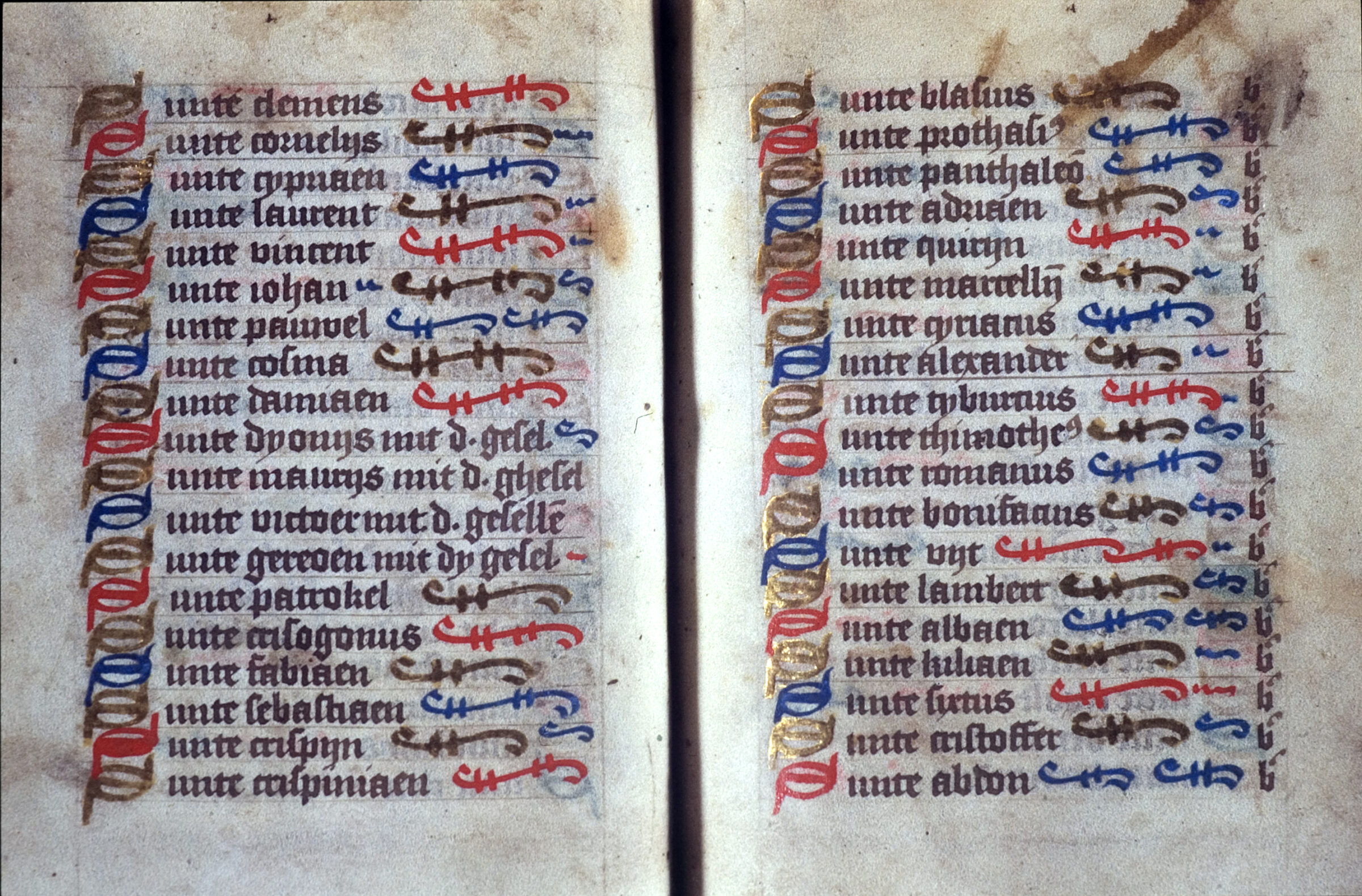
The Germania monastery was a Benedictine monastery for both monks and nuns who followed the rules of the Order of Saint Benedictus. In practice, only nuns lived in Germania. The monastery probably only remained a combination of a monastery and a convent for strategic reasons, as convents did not have access to important provincial meetings.
It is unclear where the name Germania comes from. For a long time, it was thought that the monastery was named after Saint Germanus, who was supposed to be the patron saint of the monastery. However, a note in this book of tides mentions that ‘the seven brothers’ were the patron saints of this monastery. It remains a mystery why the monastery was called Germania.
The nuns in the Germania monastery did not have an easy life. A chronicle describes how 24 nuns had to flee the monastery in 1498 out of fear for hordes of soldiers that were roaming around this region at the time. During the Eighty Years’ War (1568-1648), Germania was plundered several times, both by the Geuzen (Dutch Protestants) and the catholic Spaniards. Some of the nuns were captured during these raids. In 1584, most of the monastery was demolished during a raid, after which the nuns left for the refugium (house of refuge) owned by the Thesinge convent on the Herestraat in Groningen.
But Germania also experienced peaceful times, during which the nuns wrote and copied manuscripts. Compared to other regions in Europe, for a long time the monasteries in the north of the Netherlands were the most important producers of handwritten books. This book of tidesin Middle Dutch is a beautiful example. It was written on this location by the nuns of the Germania monastery.
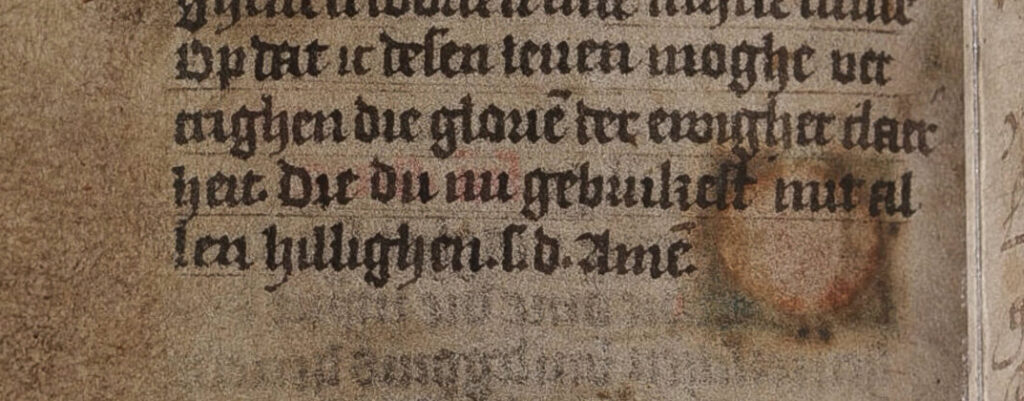
In this particular case, we even know the name of the nun who did the writing: Stine Dutmers. She added her initials in two places, one of which is the last line of the text, before the final word ‘Amen’. That these letters s.d. signify Stine Dutmers’s initials we know from another book of tides which was made at Thesinge in 1527 and is now owned by the University Library at Ghent. In that book Stine wrote her name in full. At the end of the text (fol. 183r) we read that the copying of the text was completed on 29 November 1527 by Stine Dutmers “nunne to tesinge”. Incidentally, two more manuscripts containing Stine Dutmers’s initials have been preserved, and the Groningen Archives own one parchment leaf from a chronicle containing Stine’s handwriting and again her initials s.d.
Our manuscript book of tides has been elaborately decorated with coloured initials and with drawings in the margins of the text. The use of bright colours and gold paint, and the ‘luscious leaf and flower motives’ are characteristic of decorated handwritten manuscripts from this region. Even though the text is written or copied by Stine Dutmers, the decorations in the book were added by Frans Maler, who lived in the city of Groningen. We know this, because he has signed one of his decorations: Frans Maler int iaer ons heren m ccccc ende xv opden viii dach voer midwinter was ik rede (“Frans Maler in the year of our Lord M CCCCC and XV on the VIII day before midwinter”). He wrote these words on 14 December 1515.
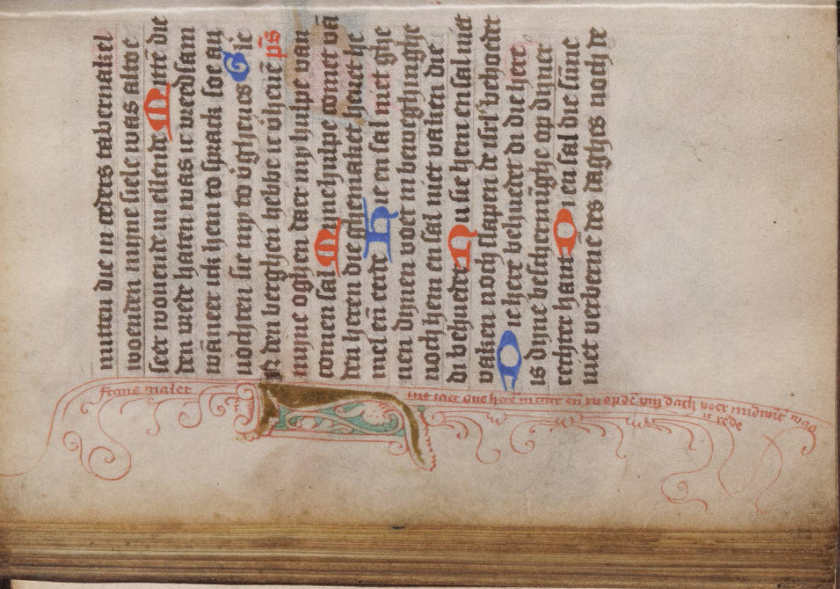
In addition to this note from Frans Maler, several other notes can be found in this small book. For example, one of the endpapers at the end of the book contains a note from the first known owner of this manuscript: Peter Claesen Soon heeft dit gheschreven ende hort dit boeck toe Anno 1521 (“Peter Claesen Soon has written this and is the owner of this book in the year 1521”).
We do not know what happened to this magnificent book of tides after 1521, but in 1989 it returned to Groningen. On 20 June of that year, it was bought by art historian Prof. James H. Marrow and his wife Emily Rose Marrow at an auction at Sotheby’s in London, after which they generously donated it to the University of Groningen in honour of Prof. Jos.M.M. Hermans in recognition of the important work he did to call attention to manuscripts from the region to all students and scholars.
Authors: Madelief Albers and Adrie van der Laan

